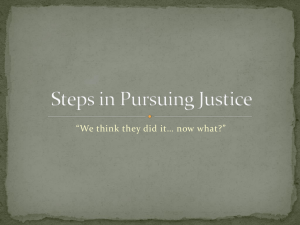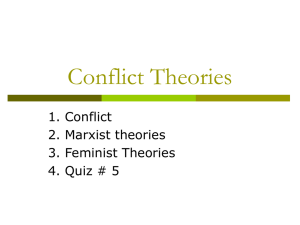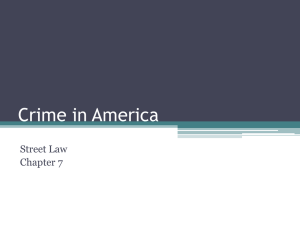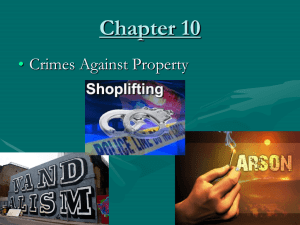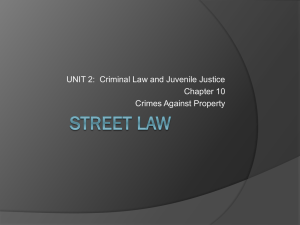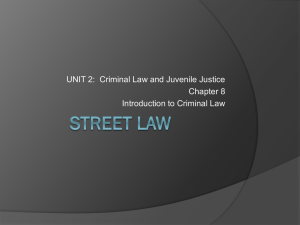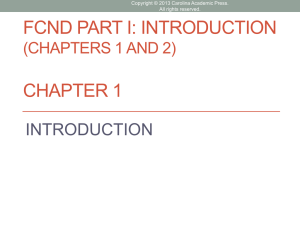Introduction to Criminal Justice After this lecture you should be able
advertisement
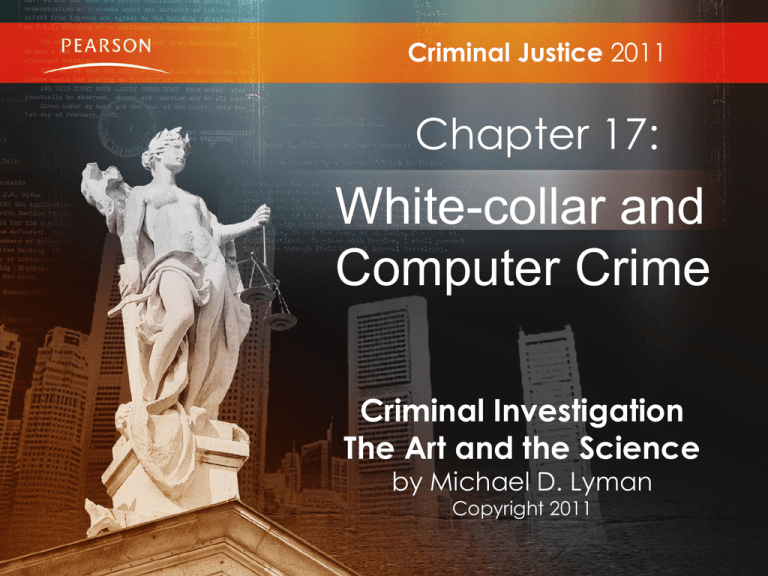
Criminal Justice 2011 Chapter 17: White-collar and Computer Crime Criminal Investigation The Art and the Science by Michael D. Lyman Copyright 2011 CHAPTER SUMMARY 17.1 Understand the various types of white-collar crime. 17.2 Understand the problem of money-laundering investigations. 17.3 List the various techniques used by organized crime to hide or “launder” illicit financial proceeds. 17.4 Learn the different types of confidence games and how they work. 17.5 Describe the nature of computer crimes and the various types of computer offenses known today. 17.6 Know what evidence to look for in the investigation of computer crimes. 17.7 Understand the profile of the computer crime suspect. Learning Objectives After this lecture, you should be able to complete the following Learning Outcome 17.1 Understand the various types of white-collar crime. 17.1 White Collar Crime Non-violent Committed for financial gain Accomplished by means of deception 17.1 White Collar Crime The statutes are quite complicated! “By virtue of his or her office, business or employment, or as trustee or bailee, having possession or custody of money or of a negotiable security, instrument, paper or other negotiable writing of another, intentionally uses, transfers, conceals, or retains possession of such money, security, instrument, paper or writing without the owner’s consent, contrary to his or her authority, and with intent to convert to his or her own use or to the use of any other person except the owner.” Wisconsin State Statute, 943.20(1)(b) 17.1 Corporate Crime A form of White Collar crime… Misleading investors Cheating customers Environmental Crimes Concealing defects Learning Objectives After this lecture, you should be able to complete the following Learning Outcome 17.2 Understand the problem of moneylaundering investigations. 17.2 Step One: Illegally earn $$$ Money Laundering Step Two: Hide $$$ from The Government Step Three: Use legitimate Businesses to “wash” the $$$ Step Four: Obtain the $$$ back Learning Objectives After this lecture, you should be able to complete the following Learning Outcome 17.3 List the various techniques used by organized crime to hide or “launder” illicit financial proceeds. 17.3 Methods of Money Laundering It is as varied as the businesses that exist in this country, both small and large Bank Methods Smurfing Currency Exchanges Double Invoicing Acquiring financial institutions Money orders Learning Objectives After this lecture, you should be able to complete the following Learning Outcome 17.4 Learn the different types of confidence games and how they work. 17.4 Confidence Games The spectrum of white-collar crime also extends to the timeless scam of the confidence game (or “con”). The Pigeon Drop The Bank Examiner Scheme The Pyramid “Get Rich Quick” Scheme Home Repair Scams Travel Scams Contest Cons Learning Objectives After this lecture, you should be able to complete the following Learning Outcome 17.5 Describe the nature of computer crimes and the various types of computer offenses known today. 17.5 Types of Computer Crime The introduction of fraudulent records or data The alteration or destruction of information or files Unauthorized use of computerrelated facilities Stealing through use of the computer 17.5 Computer Crimes Old Crimes in a new way Stalking Harassment Child pornography 17.5 Computer Crimes New Crimes in a new era Hacking Scanning Masquerading Trojan horses, viruses, data diddling, piracy, etc… 17.5 Two Categories Computer Components Hardware Computer Software Learning Objectives After this lecture, you should be able to complete the following Learning Outcome 17.6 Know what evidence to look for in the investigation of computer crimes. 17.6 Investigating Computer Crime Obtain computer evidence Examine computer evidence Preserve evidence for court purposes Interview the suspect 17.6 Investigating Computer Crime Obtaining computer evidence… Computer media Computer data Evidence online Other computer evidence including peripherals Insert a picture of the inside of a computer here please 17.6 Investigating Computer Crime Examining computer evidence… Computer media Computer data Evidence online Other computer evidence including peripherals Insert a picture of an online “history” Here please Learning Objectives After this lecture, you should be able to complete the following Learning Outcome 17.7 Understand the profile of the computer crime suspect. 17.7 The Profile! Age Most perpetrators are young and were educated in colleges and universities where computer attacks are common and sometimes condoned as “educational activity.” 17.7 The Profile! Skills and knowledge Most suspects are among the most skilled and higher-performing technologists. This is seen, in particular, in organizations in which a worker is overqualified for the work he or she is doing. 17.7 The Profile! Positions of trust In most cases, perpetrators perform their acts while working at their jobs. Investigators should anticipate that vulnerabilities identified will usually result in the most qualified person taking advantage of them. 17.7 The Profile! Assistance Perpetrators in many types of computer crime have been known to need assistance. This is because computer crimes require more knowledge and access than one person usually possesses. 17.7 The Profile! Differential association Frequently, people working together may encourage each other to engage in unauthorized acts that escalate into serious crimes. 17.7 The Profile! Robin Hood syndrome Most computer crime perpetrators interviewed in the study differentiated between harming people and organizations, the latter of which was easily condoned. In addition, they rationalized that they were only harming a computer and not causing any loss to people or organizations. CHAPTER REVIEW 17.1 Understand the various types of white-collar crime. 17.2 Understand the problem of money-laundering investigations. 17.3 List the various techniques used by organized crime to hide or “launder” illicit financial proceeds. 17.4 Learn the different types of confidence games and how they work. 17.5 Describe the nature of computer crimes and the various types of computer offenses known today. 17.6 Know what evidence to look for in the investigation of computer crimes. 17.7 Understand the profile of the computer crime suspect.


